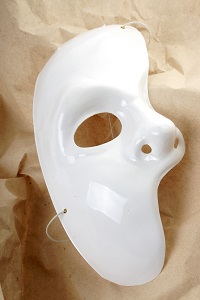
It’s always fascinating to search for the inspiration of a creative work, and that’s certainly true of The Phantom of the Opera. I tried to read the original 1909 novel by Gaston Leroux after seeing a performance of the musical some years ago, but I found it to be pretty much impenetrable. (And I just took a look at it again before writing this post; it hasn’t changed.) To me there were two questions I wanted to answer: 1) What is the reason for the Phantom’s physical disfigurement? And 2) What so-called “real events” gave rise to the legend of the Phantom in the first place?
There doesn’t seem to be any reason given for the Phantom’s horrible face in the original novel, which describes it as a “noseless, lipless, sunken-eyed face which resembles a skull dried up by the centuries, covered in yellowed dead flesh.” It is simply the way the child, christened Erik, was born. The epilogue of the novel gives a brief synopsis of Erik’s early life, saying that his own mother couldn’t stand the sight of him and he therefore ran away from home as soon as he could, with the intriguing tidbit that his father (who died before the Phantom’s birth) was a master builder. While I couldn’t get into the original version by Leroux, I found the1990 novel Phantom by Susan Kay to be utterly compelling. If you’d like to read a re-telling of the Phantom story told with great empathy from several points of view I’d recommend this book. Kay adds some intriguing twists to the story at the end, but I won’t tell you what they are! In a couple of film versions there are specific reasons given for the deformity: an acid attack and an accident with a record presser. (That second one is set within the cutthroat world of the early music industry.)
